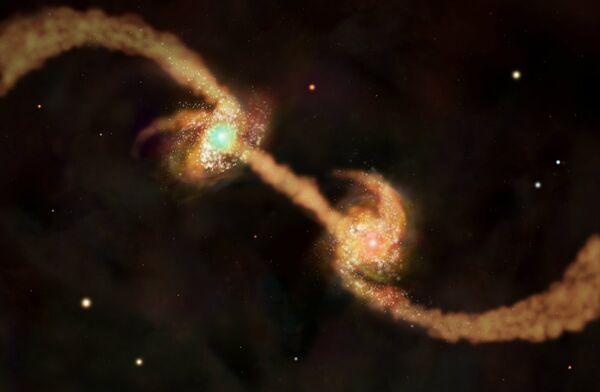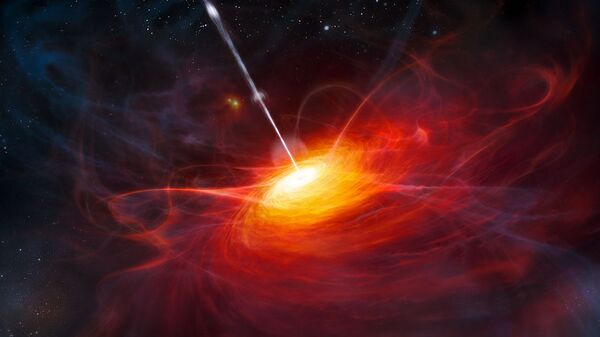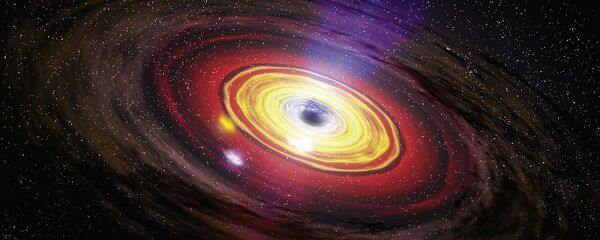The black hole is powering a quasar that scientists call the “brightest lighthouse in the distant universe” and believe to be one of the oldest in the galaxy.
The quasar, a distant mass of energetic luminous material that contains both radio waves and electromagnetic activity, has been named SDSS J0100+2802. The black hole at its center has the mass of about 12 billion suns — and the luminosity of 420 trillion of them. Its cosmic address is about 12.8 billion light years from Earth.
This represents a major discovery in the study of quasars, which are the most powerful objects in the universe. Early quasars were thought to have been born 900 million years after the Big Bang, which scientists speculated to have happened 13.7 billion years ago.
"How can a quasar so luminous, and a black hole so massive, form so early in the history of the universe, at an era soon after the earliest stars and galaxies have just emerged?" Dr. Xiohui Fan of the University of Arizona’s Steward Observatory said. "And what is the relationship between this monster black hole and its surrounding environment, including its host galaxy?”

"This ultraluminous quasar with its supermassive black hole provides a unique laboratory to the study of the mass assembly and galaxy formation around the most massive black holes in the early universe."
“This quasar is a unique laboratory to study the way that a quasar's black hole and host galaxy co-evolve,” commented Dr. Yuri Beletsky of the Carnegie Institution in Washington DC.
"Our findings indicate that in the early universe, quasar black holes probably grew faster than their host galaxies, although more research is needed to confirm this idea."
"By comparison, our own Milky Way galaxy has a black hole with a mass of only 4 million solar masses at its center; the black hole that powers this new quasar is 3,000 times heavier," Fan said.
Astronomers have dated the quasar and it’s supermassive blackhole’s birth to an important cosmic event known as the “epoch reionization”: the time scientists believe the light from the earliest galaxies and quasars ended the “Cosmic dark age” and set the universe on the path to becoming what it is today.



